Since 2005, Southeast Michigan’s annual Traffic Incident Management (TIM) Workshop has highlighted the importance of providing first responders with adequate resources for keeping the transportation system safe. This multi-faceted workshop features discussion panels, networking opportunities, and presentations on up-and-coming technology and techniques as well as existing and foreseeable challenges.
Many TIM advances have been shared at these workshops and helped refine operations in Southeast Michigan. For the most recent workshop, SEMCOG produced a retrospective Operations Partnering Workshop video (watch below) that showcases the history of traffic incident management in Southeast Michigan.
On May 11, the City of Novi welcomed 90 participants to the 2023 Incident Management Operations Workshop at the Novi Civic Center. Presenters included Hilton Kincade, Brian Miller, Brian Davis, Dennis Richards, myself, Matt Bowman, Michael O’Brien, and Dawn Miller.
The Workshop was kick-started by City of Detroit Emergency Management Director Hilton Kincade. Kincade provided a summary of the District Detroit Full-Scale Exercise conducted in late April. This exercise took place in the Comerica Park and Ford Field area. The Lions, Pistons, Red Wings, Tigers, local response, emergency management agencies, and federal partners were brought together to conduct simulated events:
- a response to a vehicle crash at Ford Field
- an elevated shooter at Chevy Plaza outside Little Caesars Arena, and
- an improvised explosive device detonation near the Q-line adjacent to Little Caesars Arena.
The exercise tested response plans, public and media messaging procedures, family assistance procedures, and executive-level decision-making among the teams and their partner organizations and agencies. Kincade emphasized the importance of developing relationships with first responders of all disciplines so that there is seamless cooperation during emergencies within the city and within the region.
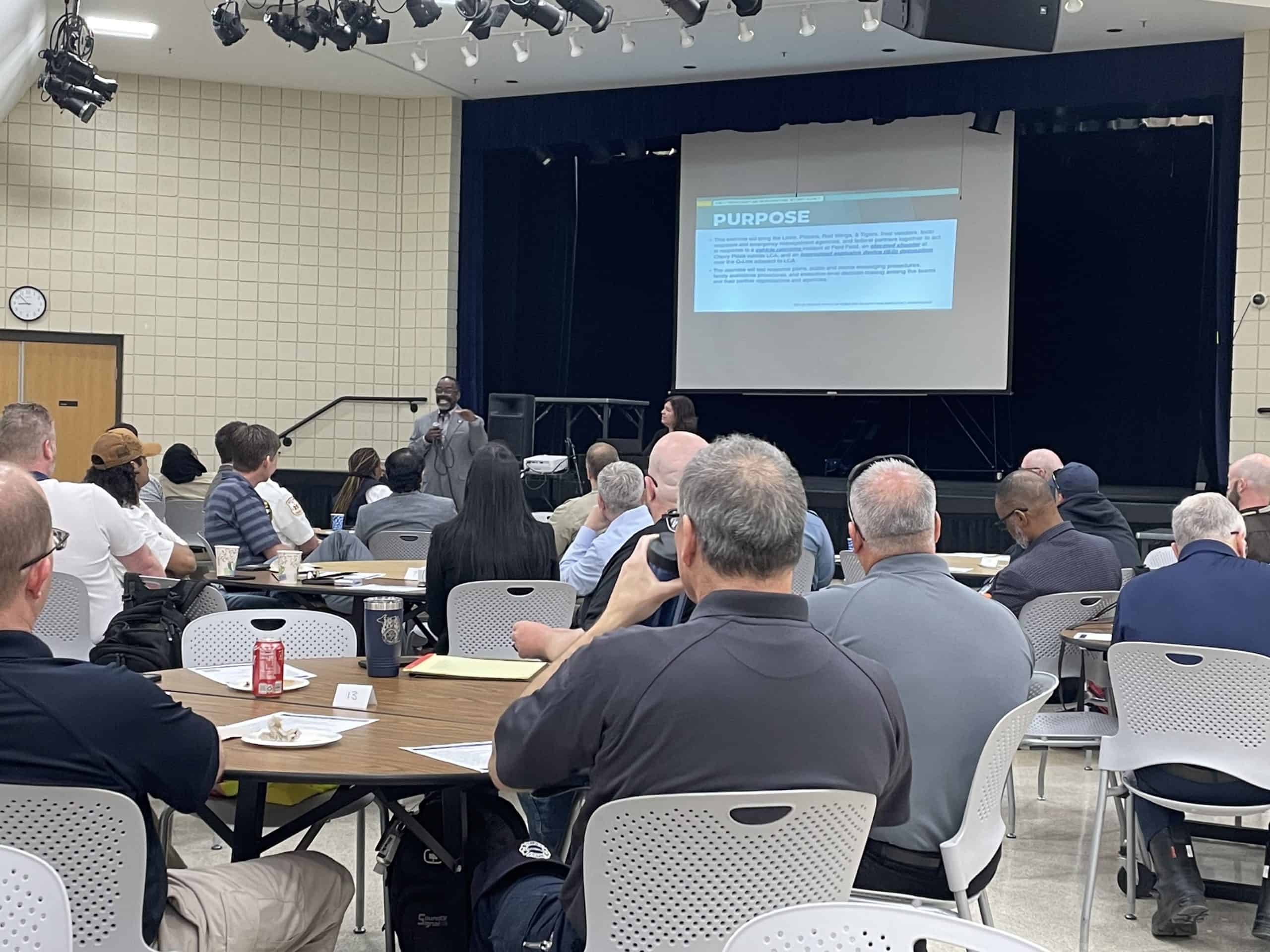
Hilton Kincade Presenting
Auburn Hills Police Officer Brian Miller presented on first-responder resource sharing along I-75 in Oakland County, specifically Troy, Auburn Hills, and Bloomfield Township. Resource sharing refers to the shared use of equipment and trained responders between municipalities. These police departments have a common protocol for traffic incident response that allows officers from one community to assist with a response in an adjacent community. This results in safe, quick clearance after crashes along approximately 20 miles of I-75 in Oakland County.
Brian Davis from the Michigan Department of Transportation described the construction of the I-96 Flex Route. Video cameras are being used in the construction zone to help the Department of Transportation manage traffic issues in the construction zone.
Dennis Richards from Incident Clear showed the debris removal system that allows clearance of items from the travel lanes without putting a responder on the road. It is compatible with Standard Push Bumpers. It is used with Three-quarter Ton or higher vehicles. It is frame-mounted steel with a two-inch durable wearing edge. It features interior handheld control.

I provided an overview of the emerging technologies section of SEMCOG’s 2023 Transportation Safety Plan. This presentation highlighted trends, benefits, and challenges of electric vehicles and the difficulties experienced by fire service responders in extinguishing electric vehicle fires. According to a 2020 study, “A Review of Battery Fires in Electric Vehicles,” battery fires are unpredictably re-ignitable.
NHTSA has established a “…Battery Safety Initiative for Electric Vehicles” to coordinate research and other activities to address safety risks relating to batteries in electric vehicles and plug-in hybrids. NHSTA says first responders should consider the following:
The baseline U.S. protocol for responding to events such as these is to let the vehicles burn because of the aforementioned considerations. With these challenges in mind, the beginning steps for integrating EVs into the Southeast Michigan transportation system include:
- Road-user safety education such as webinars, outreach, campaigns, events, etc.
- More coordination with auto-industry partners
- Infrastructure updates such as continued roadway safety improvements, FHWA proven safety countermeasures, and signal timing
- Access Management- the design, application, and control of entry and exit points along a roadway
The Energy Security Agency (ESA) provides real-time guidance for responders operating at emergency incidents, risk analysis for hybrid and electric vehicles post-incident, emergency response resource guides to fire services, battery burn testing & gas analysis, multi-industry training, consulting for manufacturers, and emergency response plans for industries. ESA services are available to private and public sector industries that have various levels of interactions with lithium-ion batteries and stored energy technologies.
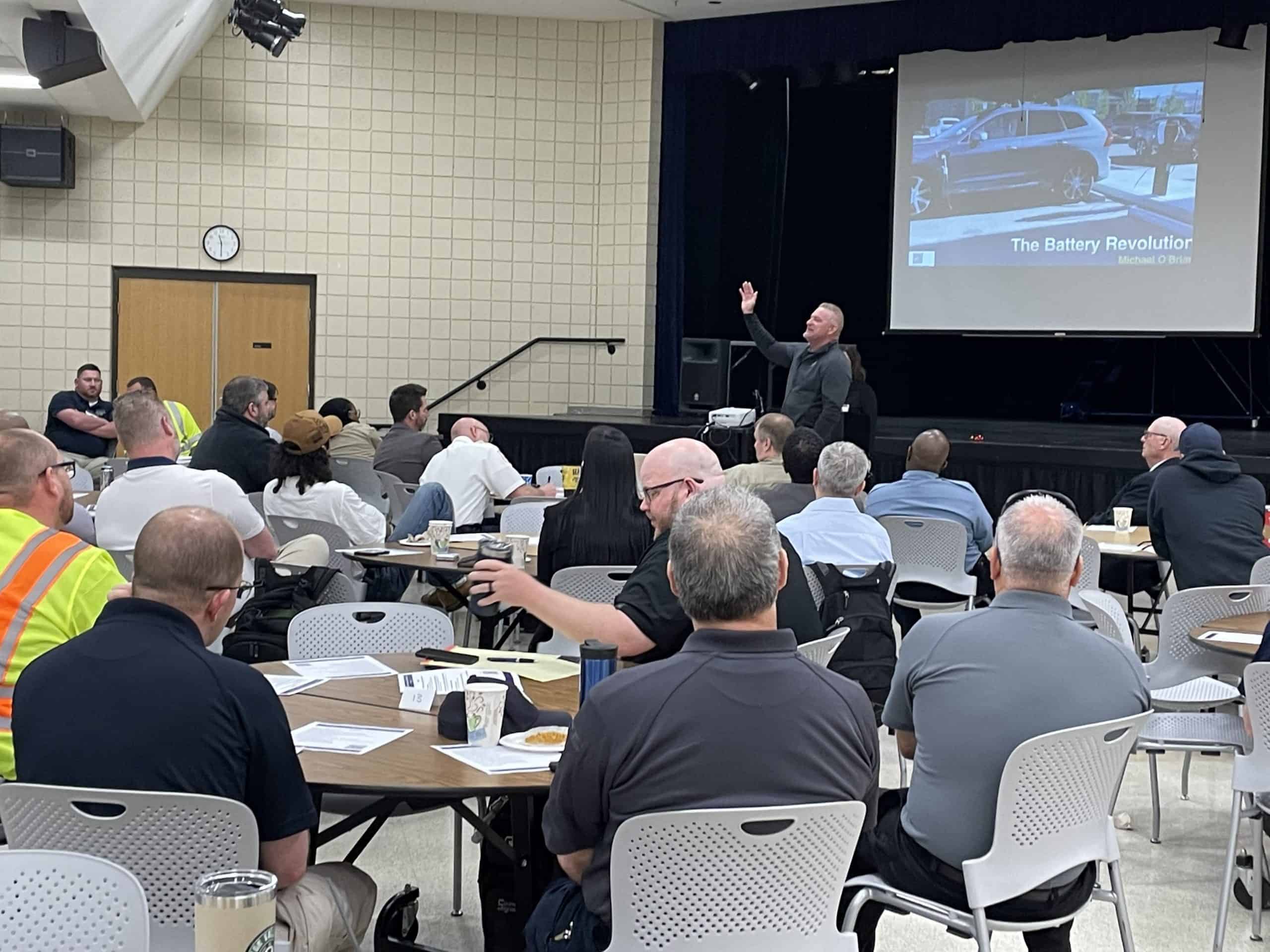
Matt Bowman Presenting
Matt Bowman from the Energy Security Agency presented further details on electric vehicle battery fires. He noted that water does not necessarily extinguish battery fires. The danger of electric vehicle fires is both from the flames and from the gases released by the battery. Vehicle occupants need to get 50 feet away from the battery fire to be safe. Responders need to get vehicle occupants clear of the fire-burning dangers and the gas release dangers. He recommends tagging the electric vehicles so that responders know the type of battery being encountered.
If a plug-in hybrid or electric vehicle was in a collision, or on fire call the ESA for free, real-time guidance. 1-855-372-7233.
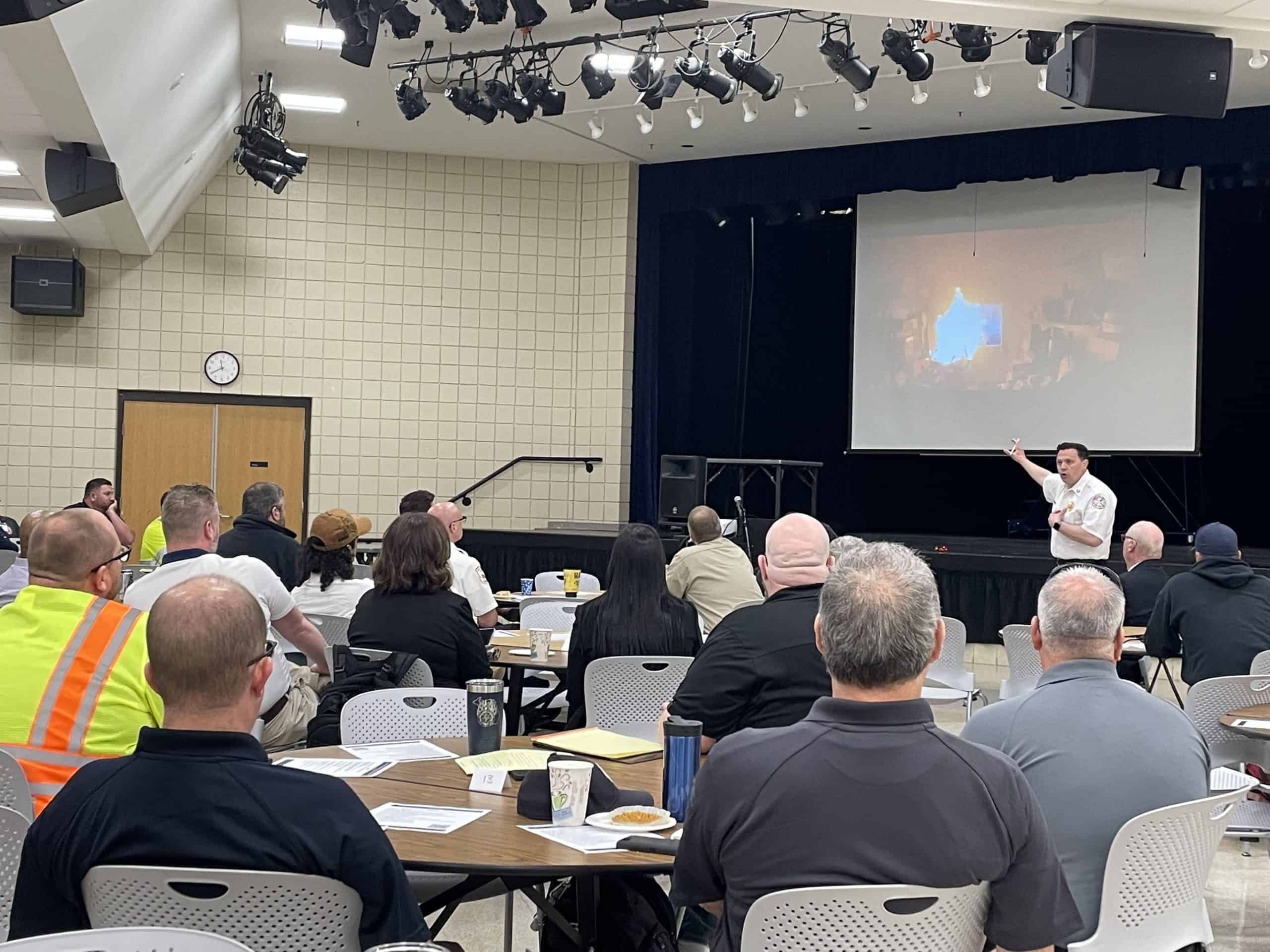
Michael O’Brien Presenting
Brighton Fire Chief Michael O’Brien echoed Matt Bowman’s concerns about electric vehicle battery fires. He noted that Michigan intends to become a center for electric vehicle battery production, and this will mean more electric vehicle batteries on the roads as in trucks as the supply of electric vehicle batteries moves to the electric vehicle production line. Fire service responders must be aware of fires in electric vehicles and fires as freight on trucks carrying electric vehicles.
Lastly, Dawn Miller, Incident Operations Engineer with the Michigan Department of Transportation, gave a status report on Michigan’s incident management training. Approximately half of the first responders in Michigan have received the training, and another training session was held in Ann Arbor immediately after the Partnering Workshop for 18 of the workshop attendees. Michigan has trained 9700 responders and hopes to train an additional 6,500 by the end of 2026. This event was successful thanks to the planning efforts of Dick Beaubien, Sarah Gill, Ahmad Jawad, Nathan Ross, Barbara Swan, and Chris Williams.
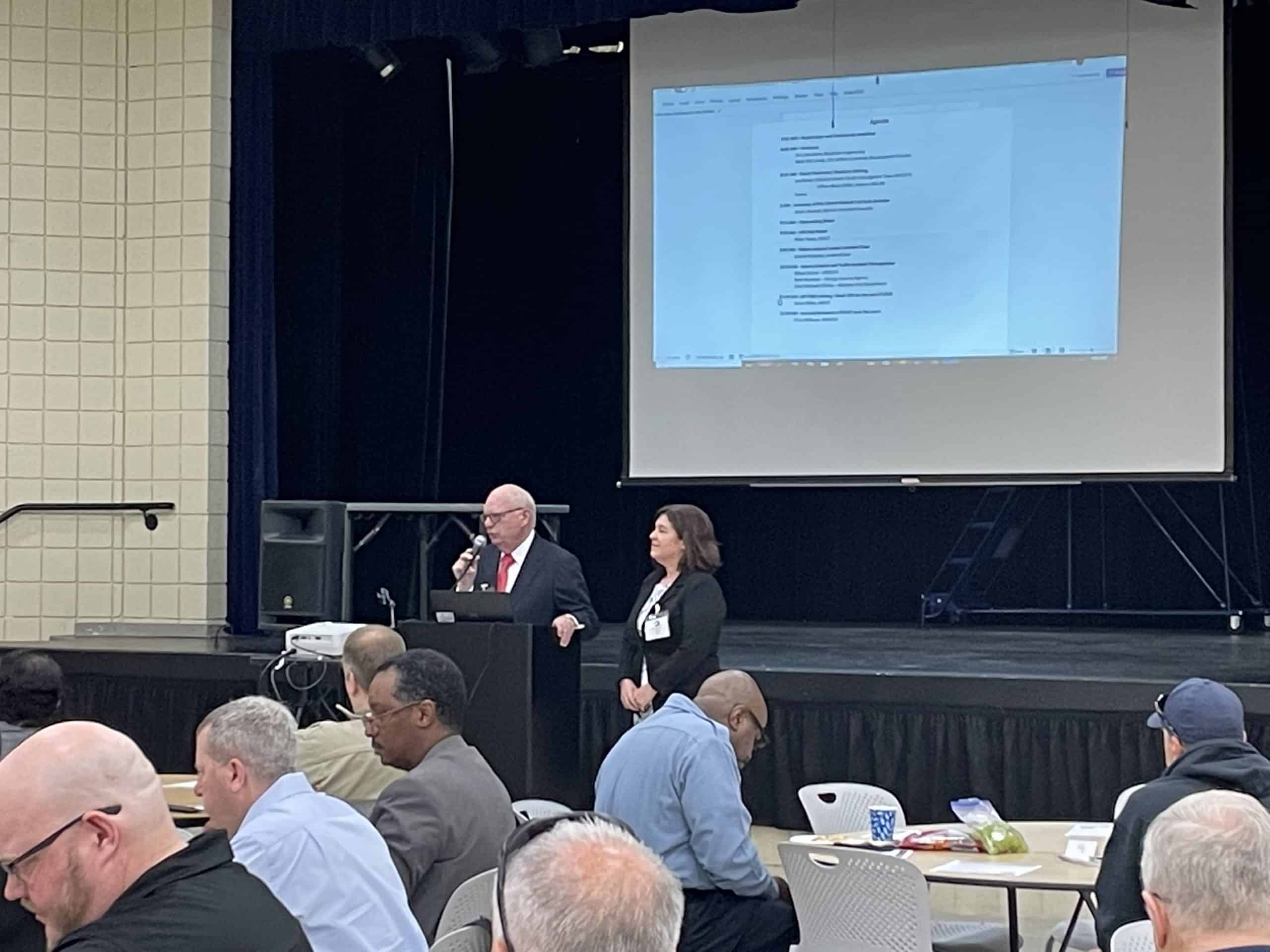
Dick Beaubien and Barbara Swan’s Closing Remarks

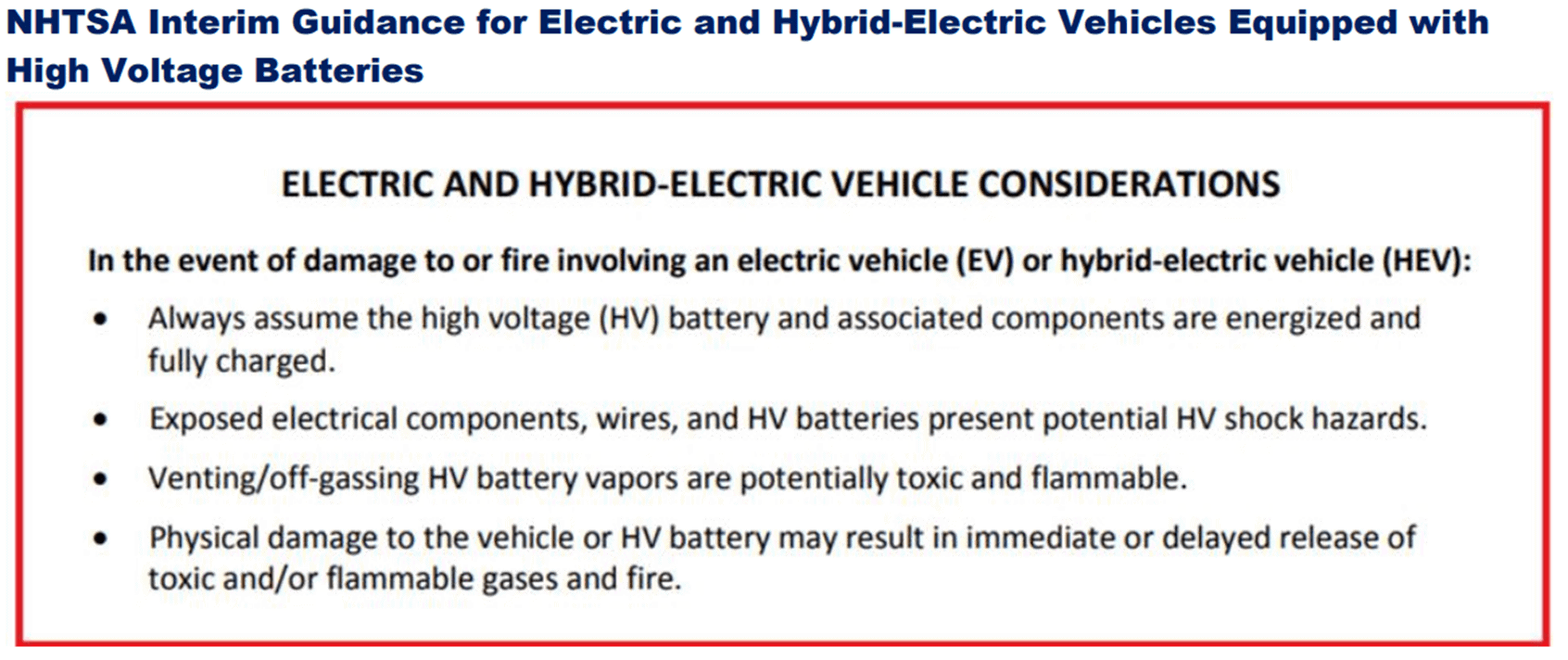
Leave a Reply